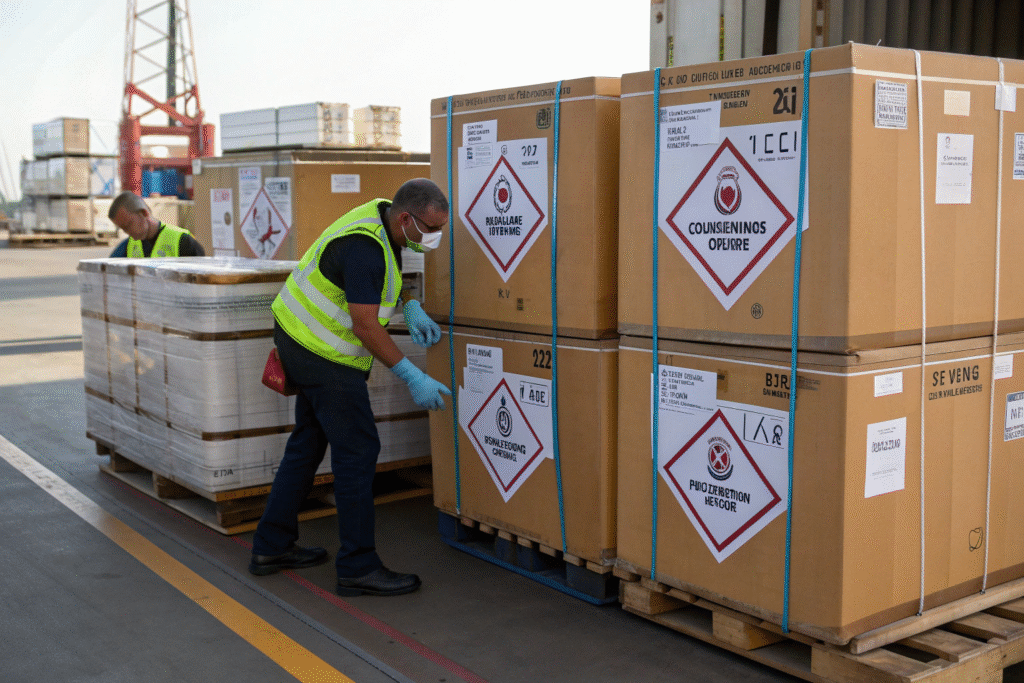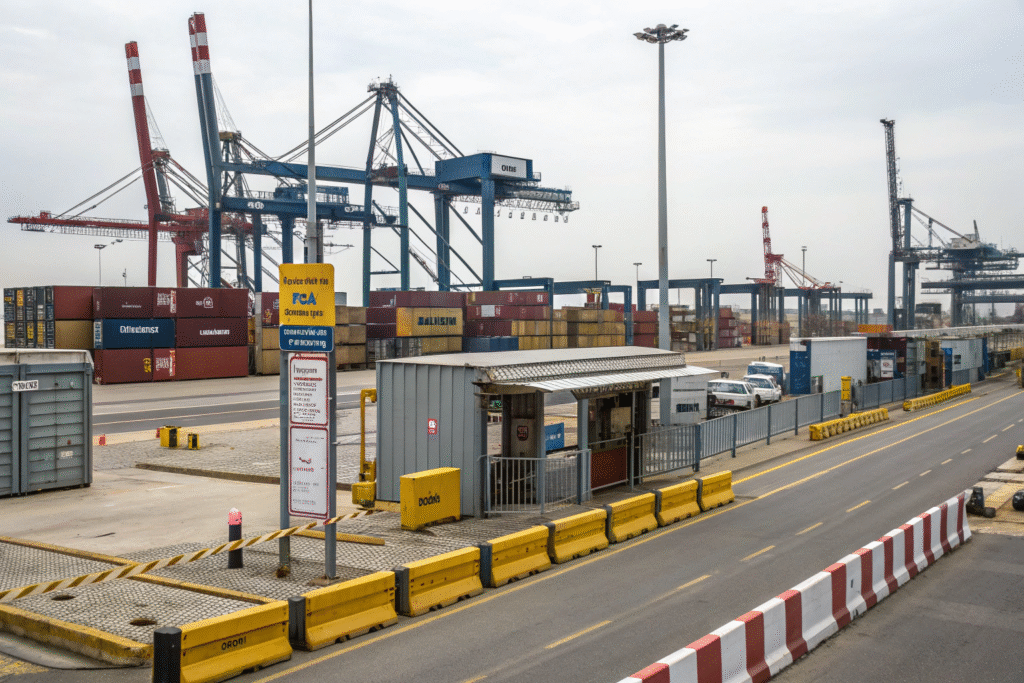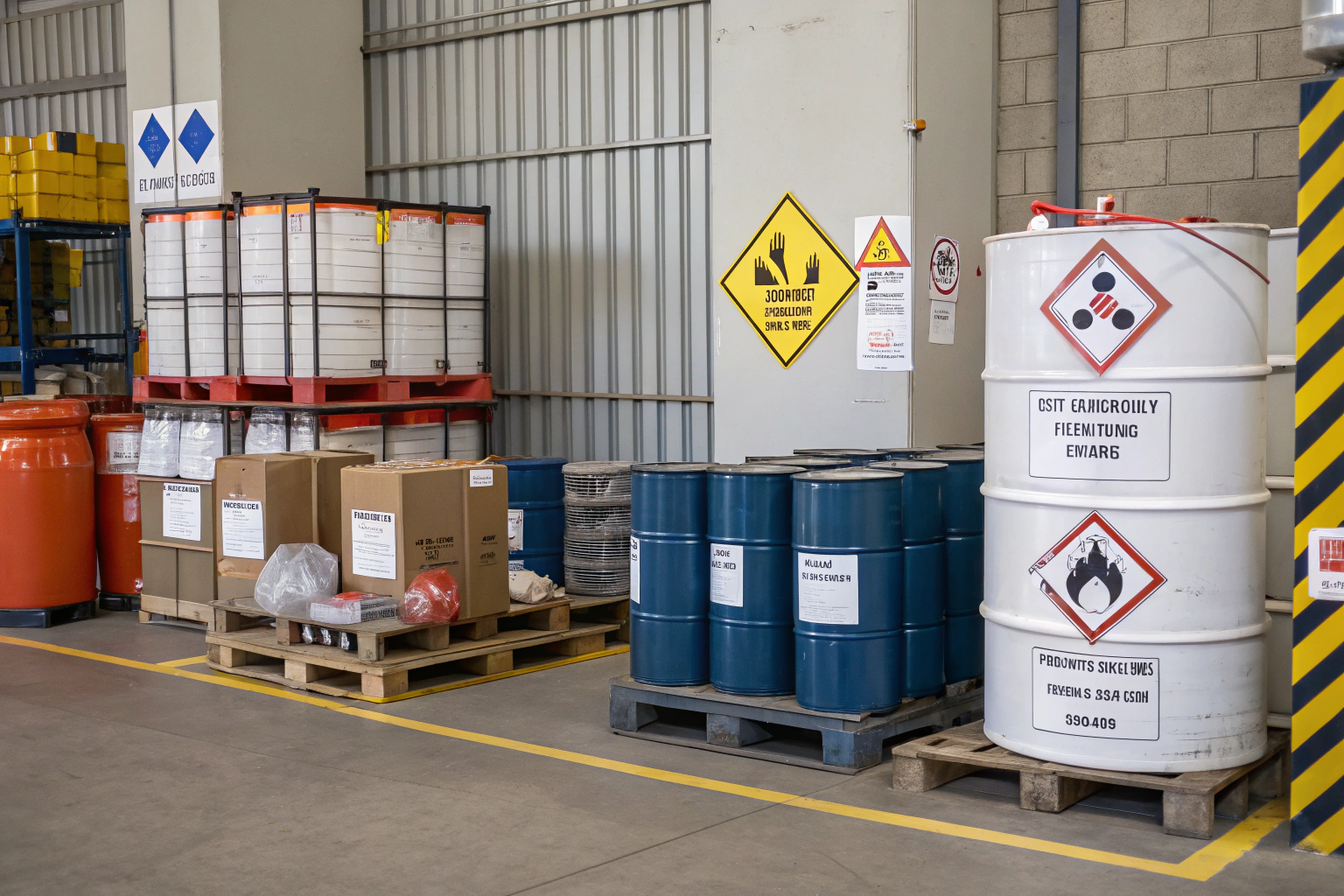Dangerous Goods (DG), defined under UN classification, include hazardous chemicals, flammable materials, lithium batteries, pharmaceuticals, and other regulated commodities. Mishandling exposes shippers to regulatory penalties, carrier rejections, or catastrophic supply chain disruptions.
Freight forwarders provide compliance-driven DG management by ensuring adherence to IATA DGR, IMDG Code, ADR, and DOT/49 CFR. Their role encompasses documentation accuracy, UN-spec packaging, certified labeling, and carrier coordination with DG licenses.
From my experience with U.S. and European importers, shipments without DG expertise frequently result in customs holds, demurrage, or liability exposure. Professional freight forwarders mitigate these risks through structured compliance protocols.
Which Regulatory Frameworks Govern DG Shipments?
DG transport is controlled by multilayered regulatory frameworks:
- IATA DGR (Dangerous Goods Regulations): Mandatory for air freight.
- IMDG Code (International Maritime Dangerous Goods Code): Governs maritime shipments.
- ADR (European Agreement): Applies to intra-European road transport.
- 49 CFR (U.S. Department of Transportation): Regulates domestic DG transport.
Forwarders with DG-trained staff ensure compliance with these frameworks, preventing penalties, shipment refusals, and safety breaches.
Recently, a lithium battery exporter avoided shipment rejection by correcting documentation according to IATA’s Packing Instruction (PI 965/966).

Why Is IATA DGR Non-Negotiable in Air Freight?
IATA requires DG classification, packaging, and labeling. Non-compliance leads to cargo offloading or airline bans.
How Does the IMDG Code Safeguard Ocean Cargo?
IMO mandates segregation, stowage, and documentation of hazardous materials to prevent maritime incidents.
How Do Forwarders Manage DG Documentation?
Documentation accuracy determines DG acceptance. Core requirements include:
- Shipper’s Declaration for Dangerous Goods (DGD): Communicates hazard class and UN number.
- Safety Data Sheet (SDS): Provides technical hazard specifications.
- UN hazard labels and markings: Required for international carriage.
Forwarders validate SDS, prepare DGD in compliance with ICAO/IATA standards, and ensure alignment with customs filings.
One chemical importer incurred penalties when SDS data conflicted with customs declarations. After implementing pre-shipment audits, clearance delays were eliminated.

Why Is the DGD Mission-Critical?
ICAO specifies that inaccuracies in DGD can result in shipment refusal and civil penalties.
How Do SDS Support Classification?
OSHA mandates SDS to communicate hazard details to carriers, regulators, and emergency responders.
How Do Forwarders Oversee Packaging and Labeling Compliance?
DG shipments must use UN-certified packaging tested for vibration, stacking, and impact resistance. Forwarders verify packaging specifications against UN performance standards and apply hazard labels per regulatory requirements.
Compliance prevents leakage, fire hazards, or contamination during multimodal transport.
For instance, corrosive liquids shipped in non-certified containers were re-exported by port authorities. After switching to UN-marked drums, clearance proceeded without issue.

Why Are UN Packaging Standards Critical?
The UNECE defines UN packaging codes that guarantee resilience during international carriage.
How Do Labels Reduce Handling Risks?
The European Chemicals Agency (ECHA) highlights that correct labels alert carriers and responders, reducing operational risk.
How Do Forwarders Control Transport and Risk Mitigation?
Transporting DG requires licensed carriers, specialized routing, and segregation of incompatible classes.
Forwarders select carriers authorized for DG, coordinate segregation compliance, and provide real-time visibility to reduce liability exposure.
One pharmaceutical importer relied on reefer containers for DG transport. We coordinated with carriers offering both reefer and DG certification, ensuring cold chain integrity with full compliance.

Why Is Carrier Qualification Non-Optional?
Hapag-Lloyd states not all carriers accept DG. Certified carriers reduce risk of rollover, fines, and liability claims.
How Does Risk Mitigation Protect Importers?
Allianz Trade explains that cargo insurance combined with compliance audits shields importers from General Average claims and regulatory penalties.
Conclusion
Freight forwarders act as compliance managers for DG logistics. Their role spans regulatory adherence, DGD preparation, UN packaging validation, and licensed carrier selection. For professional supply chain leaders, selecting a forwarder with DG expertise reduces compliance risk, ensures operational continuity, and safeguards both cargo and reputation.









